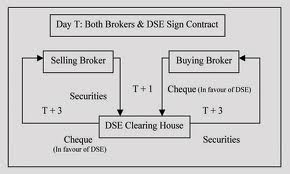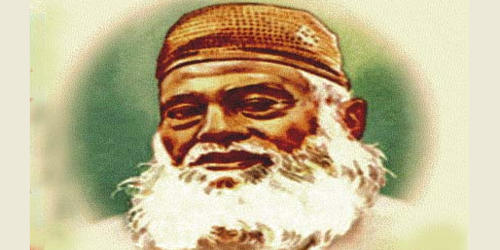Trading system of Dhaka stock exchange
The stock market is one kind of capital market where the stocks are of the different companies are traded. DSE, floor trading was started with open cry-out auction system. Now trading has become automated, led by the DSE through the central depository. In the present automated trading environment, bids/offers, depth, and required broker particulars are all recorded and can be retrieved for future reference.
Types of stock market:
There are two types of stock markets such as,
- Primary market
- Secondary market
Primary market of trading system
In primary market the following elements are observed:
- Initial public Offer (IPO)
- B/O Account
- How to apply for IPO
- IPO distribution system
- Refund warrant / allotment of IPO
- Sell / hold
- How an NRB apply for IPO
- What to know before applying for IPO
All of these are discussed below:
Initial public Offer (IPO): Initial public Offer (IPO) means first offering of security by an issuer to the general public.
Opening process of B/O Account:
- Collect B/O Account opening form from a depository participant.
- Fill it up, sign it, enclose to recent color pp size photograph and photocopy of nationality certificate / passport and a certificate from the manager of the bank account.
- Submit it to the concerned DP along with charges.
- The DP will input your data into the online server of CDBL.
- CDBL server will automatically produce a 16 digit account number like 1525685464653145
How to apply for IPO
We will get information from newspaper, stock exchanges, broker offices, web sites of SEC, DSE and the issuers, also from DSE publications.
How to apply
- Collect IPO application form from DSE or its broker offices Bankers to the issue.
- Fill it up, sign it.
- Submit the form along with the subscription money to the selected bank.
- Collect the banker’s acknowledgement.
- Wait for lottery.
IPO distribution system
Any of the three situations may arise
- Over- subscribed
- Under- subscribed
- Subscribed fully
| Situations | Distribution System |
| Over- subscribed | Lottery |
| Under- subscribed | Distributed to the public + under writers (If subscribed by less than 50%, return to the public) |
| Subscribed fully | Distribute as supply |
Refund Warrant /Allotment of IPO:
If your application is successful in the lottery, the issuer shall deposit your shares in your concerned B/O account.
If not successful in the lottery the issuer shall refund your subscription money by account payee Cheque or warrant payable to applicant.
Then you have to deposit the refund warrant to your bank for clearance. Thus your money will be returned. So there is no loss in the IPO.
Sell / Hold:
Check the B/O account and take a statement of holdings.
Now, one can sell the shares or hold it.
If you sell it, get capital Gain, if you hold its price may rise and may get dividend or stocks.
The particulars need to know before applying for IPO:
- Profitability, cash flow and financial solvency, if available
- Estimated profit and cash flow.
- Company’s product is technical one
- Company’s sponsors have good financial track record and are not loan or tax defaulters.
- Share issue price is as per net asset value and present income based value.
- Has the company long-term loan from BSB and BSRS?
- Any foreign investor’s portfolio in the company.
Secondary market Trading system:
This is well known as stock exchange, is a secondary market – a trading market. It is structured to provide liquidity and marketability to the security industry.
It is a market where you can buy and sell stocks.
We shall discuss here:
- How can I start?
- What to know before investing?
- Places to the complaints
- How DSE helps you?
Procedure of secondary market trading:
- Contact with a stock broker
- Open a client account and a B/O account
- Observe first and study the market.
- Place your buy / sell order.
- Get buy / sell confirmation.
- You can hold it or sell it if price increases.
- If you hold it you may get cash dividend or stock dividend.
Before starting secondary business we should observed-
- Fundamental analysis
- Technical analysis
Fundamental analysis:
Fundamental analysis is the process of looking at a business at the basic or fundamental financial level. This type of analysis examines key ratios of a business to determine its financial health and gives you an idea of the value of its stock.
Many investors use fundamental analysis alone or in combination with other tools to evaluate stock for investment purposes. The goal is to determine the current worth and more importantly, how the market values the stock.
Technical analysis:
Technical analysis is a method of evaluating stocks by analyzing statistics generated by market activity, past prices and volume. Technical analysis do not attend to major a security’s intrinsic value, instead they look at stock charge for patterns and indicators that will determine a stock’s future performance. Technical analysis has become increasingly popular over the past several years, as more and more people believe that the historical performance of a stock is a strong indication of future performance
















